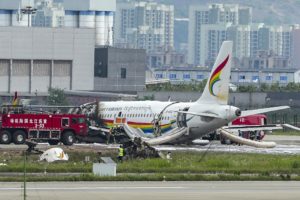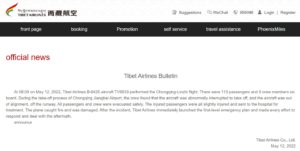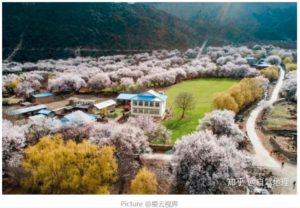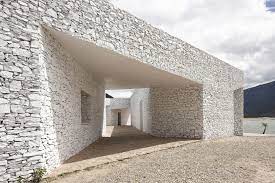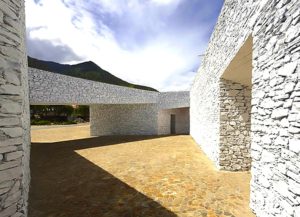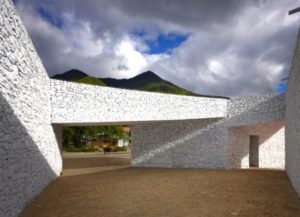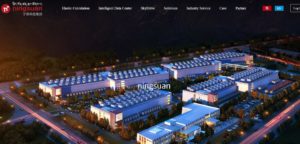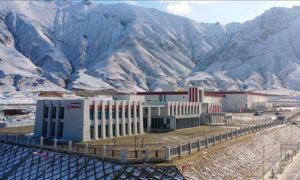TIBET AIRLINES FAILS
The crash and burn of a Tibet Airlines Airbus fortunately happened on the Chongqing runway, as the plane was about to take off for Nyingtri (Linzhi in Chinese), full of wealthy Han Chinese hoping for a relaxing hill station break from the oppressive summer heat and humidity that afflicts the twinned cities of Chongqing and Chengdu.
The plane seems to be a write off, but little harm to the passengers. A jet approaching take-off speed, when it is aborted, is at 300 kmh, hard to do a sharp brake without veering off. Exactly why the pilots had to abort at the last moment we may never know.
What we do know does provide insight into the wider context.
Tourism is by far the biggest wealth generator in Tibet Autonomous Region, providing employment for Han sojourners, especially in Lhasa and Nyingtri, the primary destinations. Even covid pandemic restrictions barely dented tourism arrival numbers. According to the 2021 TAR Statistical Yearbook, domestic tourist arrivals in 2020 were just over 35 million, a bit down on the bumper previous year total of 39.6 million arrivals. Earnings from domestic tourism fell from RMB 54 bn in 2019 to 36.6 bn in 2020. In 2020 the number of nonChinese international arrivals plummeted to 693.
Almost all of this tourist torrent go to Lhasa, further concentrated in the warmer months, an unbearable tide for a small city. But many planeloads head for Nyingtri, for much the same reasons the British Raj sought refuge from summer heat and humidity by establishing hill stations in the Himalayas such as Dharamsala, Shimla, Mussoorie etc. But the Raj hill stations were for the imperial elite, not the masses.
In 2022, as the pandemic inconveniently returned, more infectious than before, tourism may be curtailed further. Perhaps the Chongqingers on the plane reckoned on getting out of overcrowded Chongqing just in time, before the looming lockdown. They may have been reassured by the urgent construction of pandemic isolation facilities in both Lhasa and Shigatse.
Nyingtri is heavily advertised across China as the mildest of Tibetan cool climates, especially in spring, before the monsoon rainclouds push through the gaps in the Himalayas. Peak tourism season runs from peach blossom time in March through to June, then it’s a bit too wet. Taking selfies among the blossoming fruit trees shows you are not just a crass newly rich tuhao, you appreciate the finer things in life; perhaps also a glass of classy Chandon red wine made from Tibetan vineyards.
The Han good life flourishes in Nyingtri Municipality/Prefecture and especially in Bayi 巴宜 dzong/county, which is the leisure destination built from the August First (ba yi) barracks of the PLA. Official data for Bayi show meat production in 2020 was just over 4000 tons, of which two-thirds was pork, not a common pattern elsewhere in Tibet. Nyingtri has a Hilton hotel. It also has a riverside visitor centre which has won prizes for creative architectural use of local stone. Upmarket.
There are other ways Chongqing, at the upper end of the Three Gorges dam lake, is connected to Tibet. Over 20 years ago China launched its “Develop the West” campaign. Tibetans assumed this meant a sharper focus on Tibet, but most of the investment capital that poured in, at central directive, went to Chengdu and Chongqing, which grew so enormously they are now becoming a single twin megalopolis.
China’s central leaders continue to have big plans for these cities, which are deep inland, unable to source the raw materials for their many factories from global import shipping. This is where the Tibetan Plateau comes in as a prime source of not only minerals and other raw materials but also water and hydroelectricity from dams on Tibetan rivers.
China has big plans for Chongqing, which is under Beijing’s direct control, having been carved off from Sichuan. One of China’s biggest data centres is to be built in Chongqing, to be connected to the other big data hubs there is no noticeable lag or latency. That alone requires massive amounts of electricity: “Authorities highlight energy use efficiency in the plan, such as by requiring data centres to have a high-power use effectiveness — a measure of the amount of electricity for core activities like data storage and processing as a proportion of the total electricity used by the data centre. They also urge data centre clusters to use electricity generated by renewable sources, as western regions are rich in wind, solar and hydroelectric resources.”
China’s central planners have designated Chongqing as a hub for the manufacture of high performance motor bikes, high performance radial tyres and car parts, pumped storage hydro dam technology, smart phones and composite materials, to name a few in a 2022 long list of industries encouraging foreign investment.
In these ways Tibet is bound to the wheel. If Chongqing is a hub, Tibet is spokes, captive to the demands of the Chongqing-Chengdu megapolis hub, serving metropolitan wealth accumulation at every turn. Google’s Jacob Helberg, in his 2021 book The Wires of War: Technology and the Global Struggle for Power, notes that Lhasa is also intended to become a major data hub, to be ready as electronic entrepôt for any coming boom in trade with South Asia. However, the Lhasa data hub is to be controlled by Beijing. Tibet is the slave, driven by Beijing and Chongqing.
What role do Tibetans play in all of these new industries, from mass tourism to big data? Very little, beyond unskilled and underpaid gig economy work, as building labourers, hotel cleaners, airport luggage handlers. The employment opportunities and the wealth creation are monopolised by Han Chinese.
We could ask the same question about Tibet Airlines. What is Tibetan about Tibet Airlines? Nothing really. Tibet Airlines is wholly owned by Air China. It has a nominal existence, with an office in Lhasa, entitling it to subsidies. On paper, all of these industries -data, hydro, power grids, pumped storage, luxe hotels, hill stations, massive solar arrays, wind turbine farms, airports- all add to GDP and thus to China’s boast that Tibet is growing and prospering. That’s how imperialism works.

